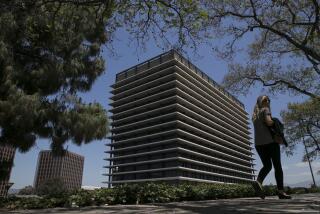The Cost of Being Dry
- Share via
One irony of drought is that the more people conserve water, the less revenue the water-seller takes in because the charges are based on the amount that is used. Also, drought often forces water agencies to seek alternative supplies at higher cost. For example, Los Angeles makes money on water imported from the Owens Valley because it generates electricity along the way. But if the city’s Department of Water and Power has to buy more water from the Metropolitan Water District of Southern California, its costs go up considerably.
Therefore the department has proposed a 9.9% rate increase beginning in October, subject to approval by the Board of Water and Power Commissioners and the City Council. The average monthly charge for residential customers would rise from $16.90 to $18.57. The additional $24 million would pay for the higher costs of MWD water, for additional water treatment and to finance the media campaign that is under way to persuade people to use less water.
The rate increase is larger than previous boosts, which typically have run about 5% a year. But users can avoid paying more if they achieve the 10% voluntary water consumption cutback requested earlier this year by the City Council. Los Angeles residents may have to become accustomed to ever-higher water charges, however, because the city faces likely future restrictions on water imports from Mono County, at the northern end of the Los Angeles Aqueduct system.
Considering the reality of the drought, and the possibility of a true emergency if next year also is dry, the proposed city rate increase is not unreasonable. It is just part of the cost of living in a desert and having to get our needed water from somewhere else.
More to Read
Sign up for Essential California
The most important California stories and recommendations in your inbox every morning.
You may occasionally receive promotional content from the Los Angeles Times.










